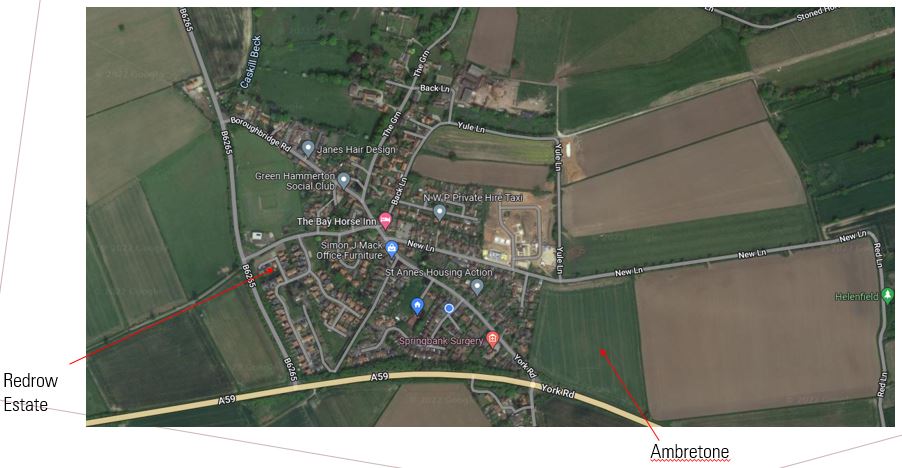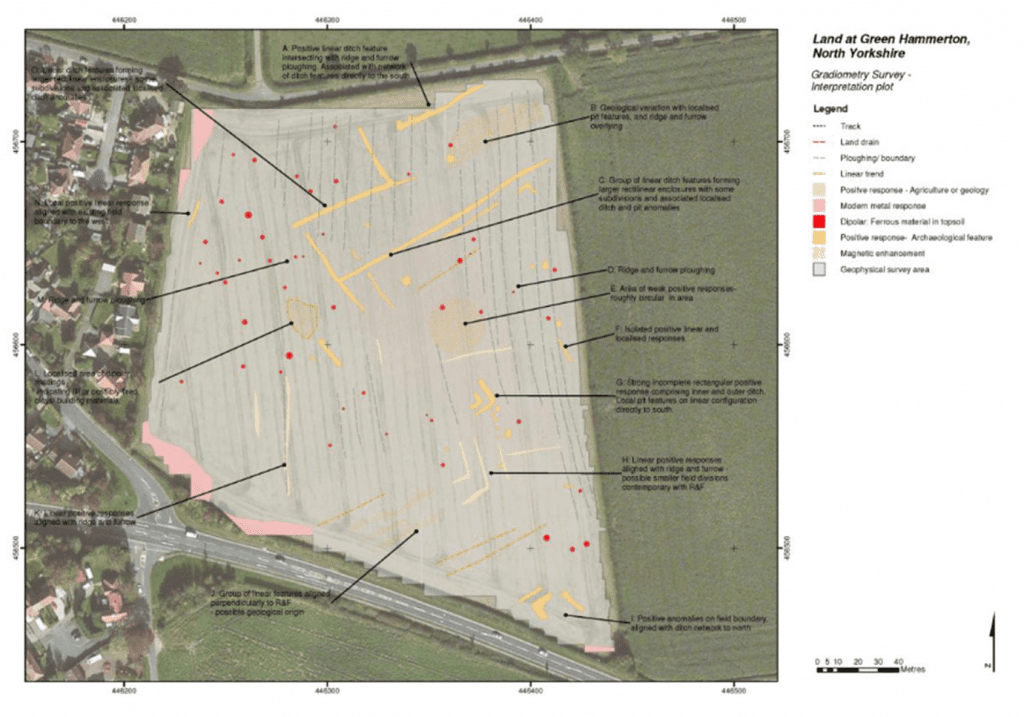The Iron Age (800BC – 43AD) is where we start to see much more activity in the Green Hammerton archaeological record.
Within the village, we’ve had several housing developments in recent years, which have turned up some interesting finds dating from the Iron Age.

The Ambretone development (ongoing as of March 2023) and the Redrow development (Circa 2018) contain some Iron Age evidence. Let’s start with Ambretone:

From the image above, there is a series of linear ditch features in the North East of the field. Ten trial trenches were dug in the field, which unfortunately did not produce any dateable finds. However the linear features were below the top soil and sub soil, and do not appear on any historic maps. This likely dates the features to either Romano-British period, or earlier Iron Age period.
On the west side of the village, opposite the village hall, excavations during the housing construction by Redrow Homes provided some really interesting evidence of Iron Age settlement.

A geophysics survey, and trial trenching, produced evidence suggestive of an Iron Age ladder settlement. A much more extensive strip-map-record project was undertaken, stripping back the blue areas on the diagram above. This produced a number of ditched enclosures, along with post holes.

Pottery was present in several places in the site, but the main concentration was in the pit shown above. In total, 359 pieces of Iron Age pottery was discovered. The pottery was characteristic of the Iron Age, possibly late Iron Age, however no Roman pottery was found on the site. We might expect to have found Roman pottery is the site had continued in use into the Roman period, especially given Green Hammerton’s location so close to York, Aldborough and the road linking the two.
Charcoal evidence showed the burning of peat and charcoal, possibly for heat, but possibly also for cereal drying. The landscape was open, mixed, deciduous woodland, as oak, alder, hazel, birch and heather charcoal was found.
Evidence from the site shows that it was a mixed cereal economy, with barley, spelt wheat, bread wheat and oats being found from the environment evidence.
So from the above, there is clear Iron Age settlement in Green Hammerton. Whilst no clearly domestic dwellings were found, it’s a reasonable suggestion to say that there would likely have been housing somewhere close by.

The last piece of Iron Age evidence comes again from the PAS database. This is a copper harness fitting, dating to the Iron Age.